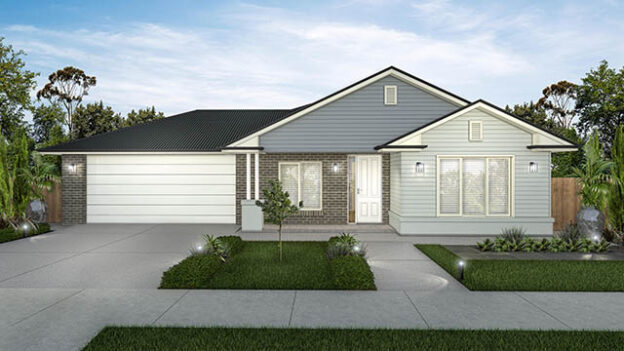The search for the perfect home is an exciting yet often challenging journey. With each passing year, new home designs emerge, pushing boundaries and offering homeowners more choices to reflect their personal style and needs. Whether you’re building your first home or seeking an upgrade, understanding the latest trends in new home designs can help you make informed decisions. In this article, we’ll explore some of the most exciting new home design trends for 2025 and discuss what to consider when planning your future abode.
1. Sustainable and Eco-Friendly Designs
One of the biggest shifts in home design is the growing focus on sustainability. As environmental concerns rise, more homebuyers are looking for ways to reduce their carbon footprint. Today’s new homes are incorporating energy-efficient features, sustainable materials, and eco-friendly technologies that are both stylish and functional. Green homes are becoming more mainstream, with designs that focus on maximizing natural resources and minimizing waste. For example, solar panels, high-efficiency insulation, and energy-saving appliances are often integrated into new home designs to reduce energy consumption. Furthermore, there is a growing emphasis on using recycled materials and reducing reliance on traditional building resources like wood and concrete. Another important feature is water conservation. Low-flow toilets, rainwater harvesting systems, and drought-resistant landscaping are increasingly common in new home designs, helping homeowners save water and maintain beautiful outdoor spaces.
2. Open Floor Plans and Multi-Use Spaces
The traditional compartmentalized layout of homes is slowly being replaced by open floor plans that encourage a more fluid, interconnected living environment. The appeal of open floor plans lies in their ability to create larger, more versatile spaces, which is particularly beneficial in smaller homes. This design trend fosters an inviting atmosphere and makes the most out of available square footage.
Moreover, multi-use spaces are becoming increasingly popular. Modern homeowners are looking for homes that can adapt to various needs. For example, living rooms are now designed to function as offices, gyms, or home theaters. Kitchens are becoming more integrated with dining areas, allowing for more seamless interaction and family bonding.
Customizing spaces to serve multiple purposes is also a great way to maximize value and utility. For instance, a guest room may double as a home office or an additional living area, depending on your lifestyle. These adaptable designs make it easier for families to navigate a rapidly changing world.
3. Smart Home Technology
Incorporating smart technology into new home designs is no longer a luxury; it’s becoming an essential part of modern living. Home automation allows homeowners to control various aspects of their homes with ease, from security systems to lighting, climate control, and entertainment systems.
Smart thermostats, lighting systems, and appliances help homeowners save energy while enhancing comfort. Voice-controlled systems like Amazon Alexa and Google Assistant are integrated into homes to streamline everyday tasks and improve convenience.
Security is another key component of smart home technology. Surveillance cameras, motion sensors, and doorbell cameras can be monitored from a smartphone, providing peace of mind even when homeowners are away. Additionally, many new home designs now come with built-in Wi-Fi and networking systems to ensure seamless connectivity for all devices.
4. Modern, Minimalist Aesthetics
Minimalism continues to dominate the design world, with many homeowners opting for clean lines, neutral colors, and uncluttered spaces. This design philosophy promotes a sense of calm and simplicity, making it ideal for those who want to create a serene and peaceful environment.
Modern, minimalist homes often feature open spaces, natural materials, and sleek, functional furniture. High ceilings, expansive windows, and open sightlines are key components of minimalist design, allowing for plenty of natural light and airflow. These elements also help to create the illusion of more space, making even smaller homes feel airy and expansive.
The color palette for minimalist homes tends to favor whites, grays, and soft neutrals, which help create a neutral backdrop for furnishings and décor. Wood and stone are often used in their natural state to add warmth and texture to the space, further emphasizing the focus on simplicity and functionality.
5. Wellness-Focused new Home Designs
As wellness becomes a larger focus in everyday life, new home designs are increasingly incorporating features that support mental and physical health. Homes designed with wellness in mind focus on providing a holistic environment that promotes relaxation, physical activity, and healthy living.
Natural light plays a central role in wellness-focused designs. Large windows and strategically placed skylights help bring the outdoors in, improving mood and overall well-being. Many new home designs are also including dedicated spaces for exercise, such as home gyms, yoga rooms, or wellness retreats that allow homeowners to focus on their physical and mental health.
Indoor air quality is another critical factor. Homes are being equipped with advanced air filtration systems and humidity control to ensure that the living environment is clean and comfortable. Additionally, the use of non-toxic paints, materials, and finishes ensures that the home is safe and conducive to health.
6. Outdoor Living Spaces
As more people embrace the benefits of spending time outdoors, new home designs are incorporating expansive outdoor living areas that extend the home’s livable space. These areas often include features like outdoor kitchens, dining areas, fire pits, and seating spaces, creating the perfect setting for entertaining guests or enjoying family time.
Patios, decks, and balconies are designed to be an extension of the indoor living area, creating a seamless transition between the two spaces. The incorporation of natural elements like water features, gardens, and fire pits enhances the outdoor ambiance, making it a place where homeowners can relax, unwind, and connect with nature.
Additionally, many new home designs are being built with outdoor entertainment in mind, including space for a barbecue, a pool, or even a hot tub. These spaces allow homeowners to enjoy the benefits of outdoor living without leaving the comfort of their own property.
7. Customization and Personalization
Today’s homeowners are increasingly looking for the ability to personalize and customize their homes. Whether it’s through the selection of materials, floor plans, or finishes, homebuyers want to ensure that their homes reflect their unique tastes and needs.
Custom homes are a growing trend, allowing homeowners to select everything from the exterior design to the smallest interior detail. This approach gives homeowners full control over the design process, ensuring that their vision is realized. Many builders are now offering personalized design consultations to help homeowners make decisions about layout, finishes, and fixtures, ensuring the home meets their specific needs.
For those looking for pre-designed homes, many builders offer a variety of customizable options, such as different floor plans, material selections, and layouts. This flexibility allows homeowners to create a space that feels uniquely theirs without starting from scratch.
8. Affordable Luxury
Luxury doesn’t have to come with an exorbitant price tag. In recent years, more homebuyers are looking for ways to achieve affordable luxury in their new homes. This means incorporating high-end features and finishes into homes without breaking the bank.
Designers are finding innovative ways to make luxury more accessible, such as using high-quality but cost-effective materials and incorporating smart designs that maximize space and efficiency. For example, quartz countertops, engineered hardwood floors, and designer lighting fixtures can all add a touch of luxury without the premium price.
Affordability is key in new home designs, with many builders offering a range of high-end inclusions that add value and comfort to the home while keeping costs down. For example, builders like Format Homes offer premium inclusions, such as state-of-the-art appliances and stylish finishes, at an affordable price point, ensuring that homeowners don’t have to compromise on quality.
Conclusion
New home designs continue to evolve as technology, sustainability, and personal preferences shape the way we live. Whether you’re drawn to eco-friendly materials, smart home technology, or minimalist aesthetics, there are endless possibilities when it comes to creating your dream home. As you explore new home options, make sure to prioritize the features that matter most to you—whether it’s an open floor plan, a focus on wellness, or luxurious finishes.
If you’re considering building a new home, companies like Format Homes can offer a range of customizable designs and options that suit your unique style and needs. With a strong focus on quality and customer satisfaction, builders like Format Homes make it easier than ever to build a home that reflects your personality, lifestyle, and values.
By understanding these emerging trends and incorporating them into your design choices, you can create a home that is not only beautiful but also functional, sustainable, and tailored to your needs.








